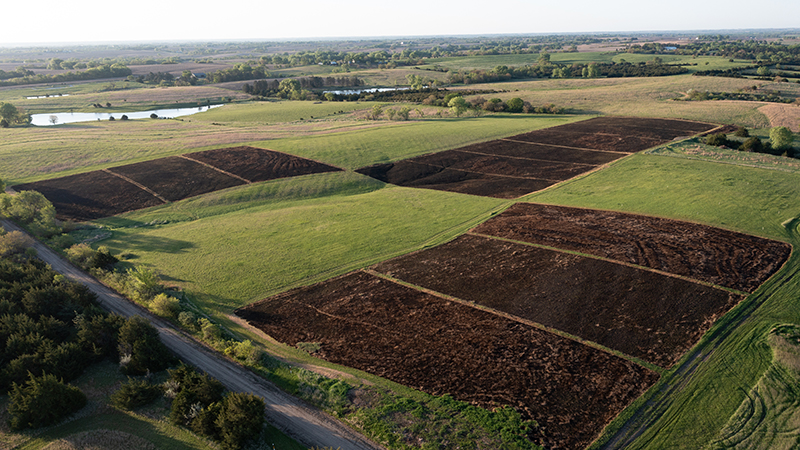
By Ronica Stromberg
Well-managed grasslands offer benefits invisible to the human eye, including increased productivity and cooler temperatures, Nebraska scientists say in the May issue of New Phytologist.
Researchers David Wedin and Katharine Hogan planted diverse seed mixes on 24 plots of land at Bobcat Prairie south of Lincoln in 2018 and 2019. The research team then managed the plots with different combinations of fire, haying, mowing or lying fallow. In July 2022, remote-sensing scientists Ran Wang and John Gamon used spectrometers and thermal imagers to compare the plots with one another and baseline images taken in 2019.
The remote sensing showed that management techniques like planting diverse seed mix and burning and haying improved the prairie's plant diversity, productivity and microclimate.
"And from this imagery and from this set of the data, we saw that they are interconnected," Wang said.
The plots planted with more diverse plants and burned and hayed or mowed grew better and had lower temperatures. Gamon said that might be because they reflected more light and heat and retained more moisture, in addition to absorbing more carbon dioxide from the air. The equipment showed the plants had higher reflectivity, meaning they didn’t absorb as much of the sun’s heat and stayed cooler. Even burned plots, although temporarily hot, showed reduced cooling compared with other plots the next growing season.
"We are pretty sure we are seeing something really exciting," Wang said and noted the study's potential importance to the Conservation Reserve Program.
CRP has been paying farmers, ranchers and landowners to conserve land since the late 1980s. Wang said research on the federal program's results typically focuses on productivity or biodiversity instead of both of these measures and climate concerns also, as the Nebraska study did.
Wang said looking at multiple measures is really hard to do, especially at large scales. Research teams need to fly a plane over plots to gather aerial images, and the high cost of plane use can limit flights to one a year or fewer. A ground crew is also needed to collect data on foot and calibrate the aerial images.
Read the complete article and see more images at https://snr.unl.edu/aboutus/what/newstory.aspx?fid=1251